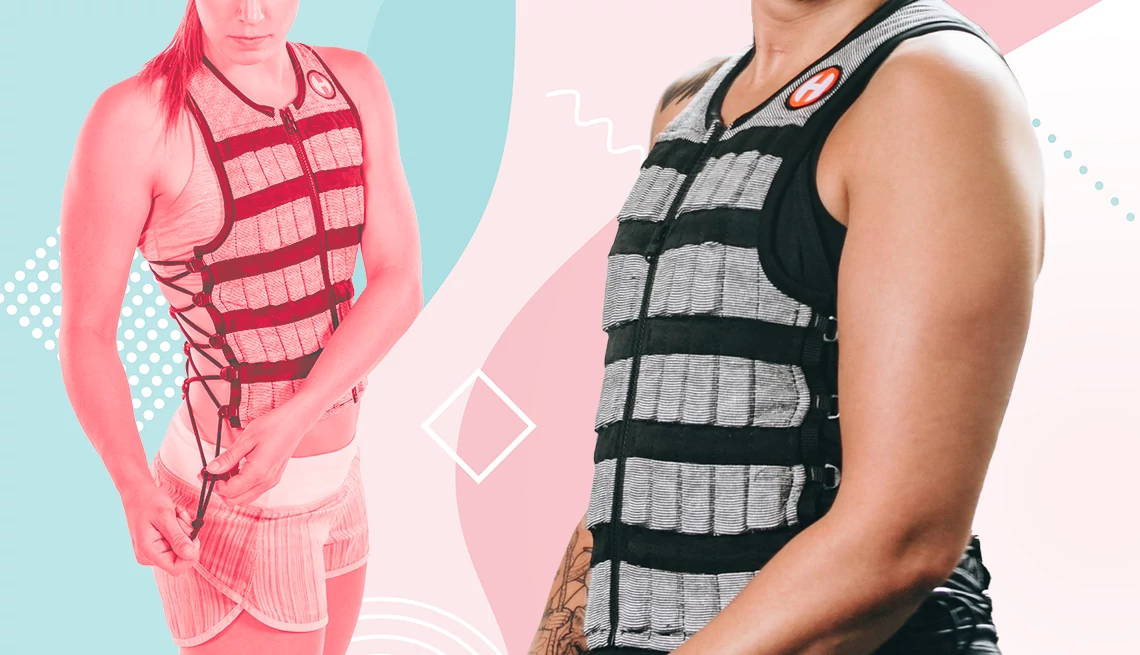
Weighted vests are in! What to know about the latest fitness trend if you’re 50+
- Select a language for the TTS:
- UK English Female
- UK English Male
- US English Female
- US English Male
- Australian Female
- Australian Male
- Language selected: (auto detect) - EN
Play all audios:

WHAT SHOULD YOU LOOK FOR WHEN BUYING A WEIGHTED VEST? GO LIGHT TO START. Fielding says, “Common sense is really important” when it comes to the weight and cautions against putting “too much
stress on your back and your core” by starting with heavy weights. Know what you can handle to start, he says. “I think a lot is going to depend on what their physical functioning is and
what their strength is at baseline,” he says, adding that “starting small and progressing is better than starting too high and having to pull back a little bit because you have an injury or
get some soreness.” CONSIDER VESTS THAT YOU CAN ADD WEIGHTS TO. Some vests, like the Hyper Vest Pro by Hyperwear that Beavers used for her study, allow you to add and take out small amounts
of weight as you choose. Beavers says you can even start by wearing the vest without any weights. Other vests, like the 12 pound vest by Reebok, have a set weight. So, if you go that route,
make sure you’re buying a vest with an appropriate amount of weight to begin with, even if that means only a couple pounds. KEEP COMFORT IN MIND. Austin says prospective buyers should make
sure the vest fits their shoulders snuggly and does not fall off onto their arms. Women, in particular, should pay attention to how their vests fit, she says. She recently designed (but has
not yet released) a weighted vest with closures that come together “above the breast line” – which she says enhances better posture and stability. The softness of the fabric is also
important for a weighted vest, Austin says, because if you’re going to wear it during the hot summer months, it might be touching skin and you don’t want a scratchy feel. “You do want to
have the flexibility of wearing it with everything you own.” WHAT SHOULD YOU DO WHILE WEARING YOUR VEST? Austin says some of her friends wear a weighted vest to do housework or even run
errands to “increase the amount of calories they burn.” But that doesn’t mean you need to wear a vest for endless hours to see a benefit, she adds. Austin recommends using them for walks,
arm exercises with additional weights or squats with or without extra weights. Fielding offers stair climbing as a viable option. Beavers is conducting a new study where participants are
trying impact exercises like hopping or box steps while wearing a weighted vest. ARE THERE ACTIVITIES TO AVOID? Beavers says she had to remind participants in her study that wearing the
weighted vest was not always appropriate. “We’d have to tell people like yes, we want you to wear it eight hours a day, but if you find yourself somehow doing some type of activity where
you’re doing a lot of bending … please take it off,” she says. Austin says things like yoga, stretching or anything else where “you go upside down” are also a no-go for weighted vest use, as
well as activities where you’re twisting. “Exercises like pickleball or tennis I wouldn’t suggest because you turn and torque too often,” she explains.
